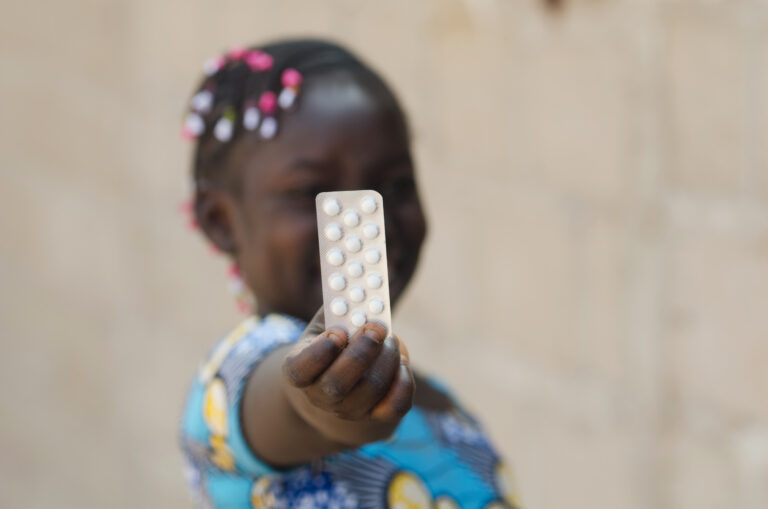More Evidence of the Abortion-Breast Cancer Link
The link between abortion and breast cancer has again been shown in a study by Patrick S. Carroll, M.A., with the results summarized in “Breast Cancer Epidemic: Modeling and Forecasts Based on Abortion and Other Risk Factors” published in the Fall 2007 issue of the Journal of American Physicians and Surgeons.
Carroll’s study used national cancer registration data for women with breast cancer in England and Wales, Scotland, Northern Ireland, the Irish Republic, Sweden, the Czech Republic, Finland and Denmark. Seven risk Factors were considered, but induced abortion was found to be the best indicator, followed by fertility.
Long-term studies such as this are only now being considered due to the time period between the average abortion and child-bearing years (under 30) and the average age of the onset of breast cancer (over 60) and the fact that abortion was legalized in most Western countries only in the 1970s.
Seven risk factors were examined and found to advance breast cancer:
-
An induced abortion on a woman in her first pregnancy (an abortion during the first pregnancy leaves breast cells in a state of interrupted hormone development which increases the risk of breast cancer later in life)
-
Giving first birth at an older age
-
Childlessness
-
Having few children (higher fertility, or giving birth to more children, reduces the incidence of breast cancer)
-
Not breastfeeding (breastfeeding reduces the incidence of breast cancer)
-
Use of contraceptives
-
Use of hormone replacement therapy.
As a result of his research findings and allowing for the aging population, the decreasing fertility rates (TER) and total abortion rates (TAR), which indicates the average number of abortions a woman would have during her lifetime, Carroll predicts an increase in breast cancer in women in the future in Western countries.
For example, he suggests the numbers of new diagnoses of breast cancer in England and Wales will increase 66.3 percent between 2004 and 2025. In 2004, there were 39,229 reported cases of breast cancer; Carroll predicts 65,252 cases in 2025. England and Wales now has a TFR of 1.86 and a TAR of .55.
Carroll predicts a 52.2 percent increase in breast cancer in women in Scotland over the same period. Scotland reports women there have fewer abortions than women in England with a TAR of .376, but Scotland also reports a greater decline in fertility with a TFR of 1.67.
Northern Ireland, where abortion is still illegal, reported a TAR of .16 and a TPR of 1.87. Carroll predicts a breast cancer increase of 46 percent, with 1,117 reported cases in 2004 and a predicted 1,626 cases in 2025.
In the Republic of Ireland with a TFR of 1.82 and a TAR of .18, Carroll predicts an increase of 54 percent, growing from 2,336 reported cases in 2005 and an expected 3,601 cases in 2025.
Sweden can expect an increase of 49 percent in breast cancer diagnoses between 2004 (7,293) and 2025 (10,895). Sweden’s TFR is reported at 1.75 and their TAR is reported to be .65.
The Czech Republic has seen a decrease in its abortion rates in recent years with a present TAR of .55, but its birthrate has also fallen to a TFR of 1.23. These are offsetting factors for breast cancer in the study, allowing a prediction of an increase in 54 percent between 2004 (5,449) and 2025 (8,412).
Finland’s breast cancer rate is expected to increase to 4,045 in 2025 from 3,794 in 2003. Finland’s TFR stands at 1.7 and its TAR stands at .34.
Denmark has also seen a decrease in both abortions performed and their fertility rate since 1989. Today, the women of Denmark have fewer abortions than those of England or Sweden, resulting in a TFR of 1.8 and a TAR of .45. Due to the decrease in abortions in the past years, the breast cancer rate is expected to decrease by .16 percent.
Generally, the results of Carroll’s study show that women over the age of 45 have had fewer children and more abortions than earlier generations of women. Theoretically, this should produce an increase in breast cancer in the future, varying in the Western countries dependent upon the seven risk factors mentioned above, and particularly lower fertility and higher abortion rates.
See the Source: Patrick S. Carroll, M.A., “The Breast Cancer Epidemic: Modeling and Forecasts Based on Abortion and Other Risk Factors,” Journal of American Physicians and Surgeons, Volume 12 Number 3 Fall 2007, http://www.jpands.org/vol12no3/carroll.pdf
No One is Too Young for Contraceptives in Maine Schools
The Portland, Maine, school district recently went to battle with parents of the King Middle School to allow the schools health center to distribute contraceptives to its students. Against the wishes of many parents, the school hoard passed a resolution to allow the school to offer birth control prescriptions to its students. The middle school students range from ages 10 to 15 in grades six to eight.
While the students would need parental written permission to access the health center’s services, what services the youngsters use is considered confidential and kept from the parents.
See the Source: Anne-Marie Dorning, “Bitter Pill: School :Board Oks Birth Control for Middle School,” ABC News, 18 October 2007, http://www.abcnews.go.com/print?id=3747045










